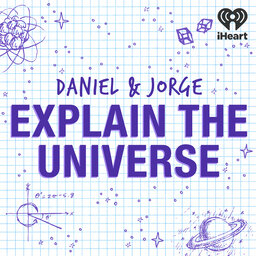Why can’t we see quantum effects in everyday objects?
Daniel and Jorge talk about quantum decoherence and why big things don't act like quantum particles.
Learn more about your ad-choices at https://www.iheartpodcastnetwork.com
See omnystudio.com/listener for privacy information.
 Daniel and Jorge Explain the Universe
Daniel and Jorge Explain the Universe


